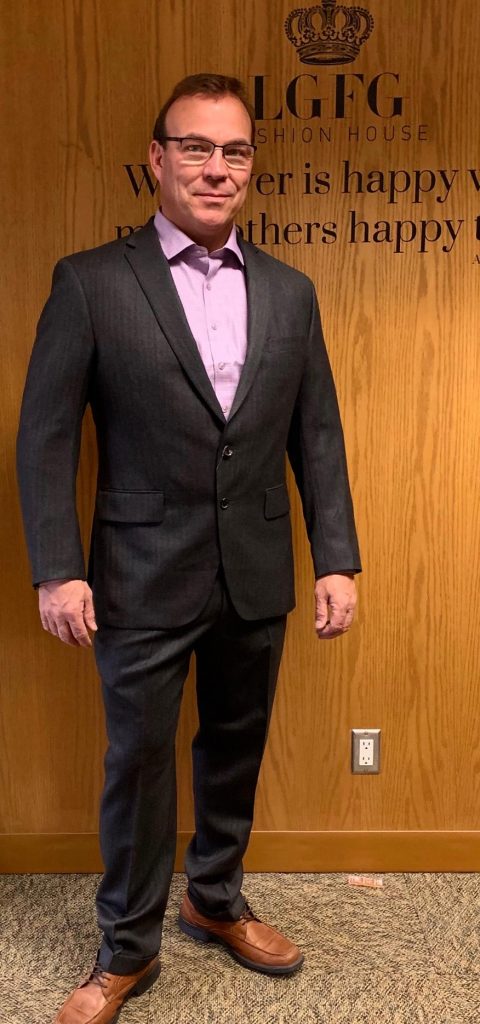
The ‘Suit of the Week’ honors goes to Lorne Zaparniuk, P.Eng., Vice President of Corvet Construction.
He is looking impeccable in his new LGFG FASHION HOUSE, suit.
Lorne’s Executive Clothier is Chris Berry.

The ‘Suit of the Week’ honors goes to Lorne Zaparniuk, P.Eng., Vice President of Corvet Construction.
He is looking impeccable in his new LGFG FASHION HOUSE, suit.
Lorne’s Executive Clothier is Chris Berry.
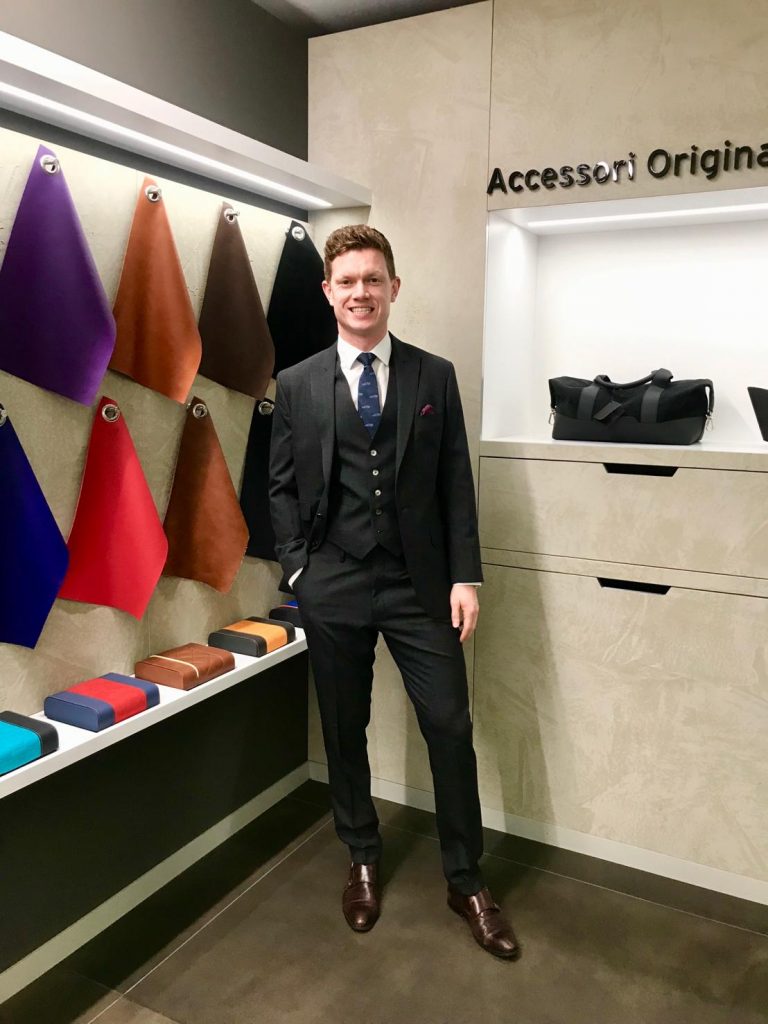
The ‘Suit of the Week’ honors belongs to Ben Dallas from Lamborghini Auckland.
He is looking superb in his three-piece, LGFG FASHION HOUSE suit. Ben’s suit features grey checks with contrasting buttons on his vest and maroon stitching to make the suit pop.
“Success is the sum of details,” said, Harvey S. Firestone, an American businessman, and the founder of the Firestone Tire and Rubber Company, one of the first global makers of automobile tires. Like his LGFG Suit, the quote from Harvey S. Firestone is very fitting for Ben who works for Lamborghini Auckland, NZ and pays attention to the details.
Ben’s Executive Clothier, is Rachel Gibbings.

The ‘Suit of the Week’ honors belongs to Andrew Kelleher, Shareholder and Director of JMI Wealth
Andrew is looking dashing in his LGFG FASHION HOUSE, two-piece suit.
Andrew selected a bronze tone from linen and wool blend in the technical line. A stunning piece to add to his #LGFG collection.
Andrew’s Executive Clothier is Rachel Gibbings.
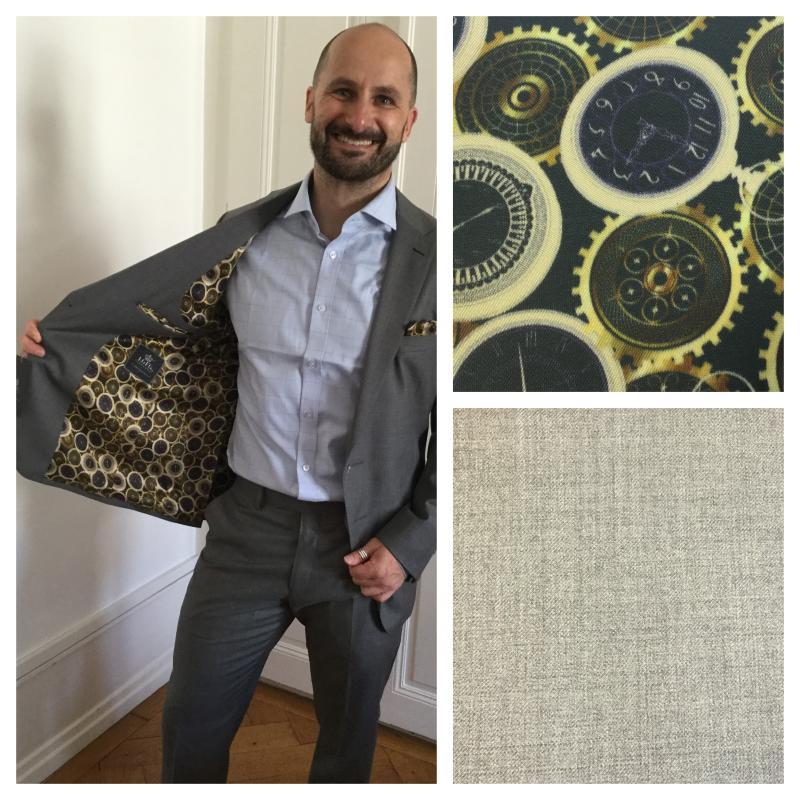
It’s that time!
The ‘Suit of the Week’ Honours goes to Martin Stocker, Customer Operations and Business Process Professional at Refinitiv, Financial Services.
Martin is looking dapper in his LGFG FASHION HOUSE, mid-grey suit with printed watches lining.
Martin’s Executive Clothier is Justas Valantinas.
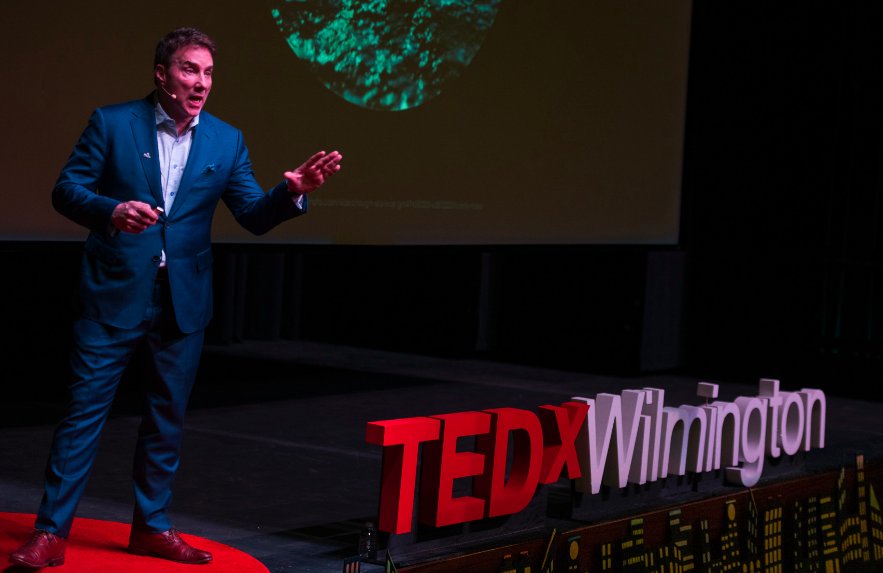
For as long as mankind can recollect, story-telling has played a significant role in history and society. Plato, famously said, “Those who tell the stories rule society.” They rule society because through stories they gain power by being able to persuade, compel and elicit emotional responses from the audience.

In business, story-telling is referred to as, storytelling, which is the act of selling your product or service by telling a story. Storytelling in the digital era is even more powerful with the amplification of the message brought about by social media and new technologies. Today, those who are great storytellers have boundless opportunity to generate revenue for themselves and their companies. Even with artificial intelligence, it will never replicate intuition and storytelling the way people do it. That is why top salespeople will always be in high demand in any company. Imagine the power of a company with a whole team full of these highly skilled story-sellers.
This is exactly what Best Selling Author and Sales Keynote Speaker, John Livesay builds when he delivers presentations to companies and works with their sales teams. John Livesay specializes in sales, marketing, negotiation, and persuasion. As a keynote speaker and storyteller John shares lessons, he learned from his sales career at Conde Nast where he won 2012 Salesperson of the Year for Conde Nast’s 22 brands & 400 salespeople.
He has been interviewed by legendary, Larry King, he writes for Forbes, his TEDx talk, “Be the Lifeguard of Your Own Life” that has over 1,000,000 views and he has a new book out now called “Better Selling Through Storytelling.”
In this interview, John sat down with Clarence Paller, Director of Public Relations and Corporate Partnerships for LGFG Fashion House.
Find out why John is referred to as the “Pitch Whisperer” and how he helps people go from invisible to irresistible, creating revenue rock stars.
When did you start your career in sales and how did you get on board with Conde Nast?
I started my career in sales when I graduated out of The University of Illinois at Urbana-Champaign. I moved to San Francisco to sell multimillion-dollar mainframe computers to big companies. I had to sell against IBM, who at the time was selling with FUD, fear, uncertainty, and doubt. In other words, if you bought anything that wasn’t IBM, and I was selling for a competitor, IBM would point fingers at the other vendor and say that’s why the computer went down. The person who was running the computer for the company could get fired because IBM would blame the other vendor. Then they would say to people, if you buy all IBM and it goes down then we will take the heat from your boss. Even though I had a product that was faster and less expensive, I realized there was a lot more to sales than just numbers and information. I had to learn how to overcome fear, uncertainty, doubt and the psychological issues around selling.
Later, I moved down to Southern California, did a complete career shift and went into advertising. I worked for an ad agency and my job was to convince movie studios to hire us to create commercials for their movies when they were coming out on home video. That’s where I honed my storytelling skills, taking two-hour movies and cutting them down to 30 seconds.
From there, I went to sell advertising for Conde Nast publications, which publishes brands like Vogue, Vanity Fair, GQ, and W Magazine. During my time at Conde Nast, I was able to grow ad revenue from $2 million to $5.5 million by breaking into new categories of advertisers, including automotive, travel, electronics, and liquor, while expanding existing categories of accounts, including fashion, beauty, and jewelry. This is back in the early 2000s when life was great and people were taking money out of their house like it was an ATM. The luxury ad market was going up because people were suddenly buying luxury products more than they ever had before. Then in 2008, housing-market crashed and with-it luxury advertising. Sales plummeted. The company ended up laying off all of the salespeople in the outside offices.
Comment on the chapter of your life when you went through the lay-off, what lessons did you learn and how did you overcome adversity?
When I was being laid off from Conde Nast in 2009 after 15 years of being with the company, even though I thought it might happen, it still felt like a kick to the gut. That’s when my lifeguard training kicked in, where we learned not to panic and stay calm when someone is drowning. When I was being laid off all those years later, that instinct kicked in, to not panic and stay calm. Hence, I made that decision to leave on a good note, while all the other people being laid off were angry and storming out.
I asked the publisher if she wanted a status report and instead of leaving angrily as she told me others were. I told her that I wasn’t going to do that to the clients. I’ve known them for 15 years, watched them get married, and have kids. Instead of storming out I wrapped up the loose ends and was able to leave on a positive note. Little did I know that that one decision would serve me two years later when they decided to rehire me because I had not burned that bridge.
This is also why my TEDx Talk is called the “Be the Lifeguard of Your Own Life. In your life when there is a hurricane, no one’s going to send a helicopter to rescue you, so you have to be able to rescue yourself.
When you got laid off you flew yourself to New York to go for interviews. You invested in yourself, even when you didn’t have the income coming in. Comment on the importance of investing in yourself first.
My big advice for people would be to think of yourself as a stock that you’re investing in. If you’re buying into stock it is because you believe and hope that those people will make something of the business and grow it. When I got laid off, I realized that on paper, I may not have been the most experienced person to sell digital ads for The Daily Beast. I figured that I had to get myself in front of them in person. When you’re spending money on yourself to fly yourself to an interview, as opposed to asking the company to fly you there, that’s when you start believing in yourself. This is when you start thinking of yourself as a brand. What a person stands for as a brand determines what they’ll bring to the workplace.
How did adversity and challenges grow you as a person? Would you say people grow more through challenges or do they grow more through success?
You know, that’s a fascinating question to me because, when I was younger, I did not understand the concept of growth through failure. Why would anybody want to fail is what I would have said back then.
Now my perspective has changed. I think you grow from challenges or failures. You learn more about yourself and your character. I had never been laid off before in my life and when it happened, I didn’t know how resilient I would need to be until I needed to be. It tests you. You either sink or swim. I was resilient and I figured out a way to reinvent myself and get hired to sell digital advertising. The irony was because I reinvented myself, two years later I got rehired back by Conde Nast. Had I not gotten this new skill; I wouldn’t even be qualified for my old job. That’s how fast things change. I went from being laid off to two years later winning salesperson of the year, not just for the magazine, but for the whole company.
Then it became my mission to help as many people as possible to get off the self-esteem roller coaster of only feeling good about yourself when you have success and down in the dumps when faced with adversity. Regardless of whether you learn more from success or failure, the real lesson for me is that who you are as a person is not based on any of that.
When you came back to Conde Nast you won 2012 salesperson of the year out of 22 brands and hundreds of the company’s salespeople. How did you do this?
One of the things that allowed me to do that was my mindset. I told myself if I’m coming back, I’m not coming back with any fear. That shift in mindset allowed me to come up with a creative concept. I noticed that it was the brand Guess was having their 30th anniversary at the same time as W magazine’s 40th anniversary. I pitched the idea that we celebrated it together. If we had an event, we would put those photos together with some celebrities, such as Drew Barrymore who had been a Guess model before and on the cover of W magazine.
This idea became a reality and received enormous publicity for both of our anniversaries. They had loved the idea so much that they created an exclusive supplement that every page in W Magazine featured a different model from the 30 years, and this was inserted into W’s 40th-anniversary edition magazine. I got some exclusive advertising gold brands as well. That’s what allowed me to win salesperson of the year. In a time when print was going down, I was able to get a huge amount of money to come in.
Comment further on mindset, specifically your mindset plus preparation plus resilience equals success formula.
You have to start with your mindset. It becomes a self-fulfilling prophecy. Whatever we believe, that’s what we see. If you think the world is a safe, friendly place, then you start looking for that. That’s why the mindset is so important. The resilience part is really important in sales as well. Resilience isn’t just about getting back up, it’s also about how fast you get back up.
I believe business and sport are very similar. For instance, one time I got to meet Michael Phelps through the brand Speedo who was one of my clients in my time with W magazine. I approached Speedo about treating their sportswear as if it were in high fashion. They could have a fashion show and invited Michael Phelps given he was on their payroll. They went with it and I got exclusive advertising for W Magazine.
On top of that, I got to meet Michael Phelps and because I had been a lifeguard and a competitive swimmer, it was quite a thrill. I asked Michael what it was about him that made him so successful. He told me that years ago his coach had asked him if he would work out on Sundays. He answered his coach yes, to which his coach said, great now you have 52 more training sessions a year that your competitors don’t. The rest, as they say, is history. The takeaway of this example for me is always asking myself, what am I willing to do that my competitors not willing to do?
How do you train your brain to see differently and obtain this mindset?
The concept of training our brain to see differently actually came to me when I decided to get LASIK surgery. There’s something called model vision, where you have to train your brain to see differently without glasses after the surgery. So how do we train our brain to see differently in the business world in our lives?
I realized that what we’re focusing on is always a choice. I tell people to let go of being a perfectionist and start thinking of yourself as a “progressionist”. For example, if you’re climbing Mount Everest, and you’re halfway up, you have a choice to train your brain to see differently. You can either think about how much progress you’ve made, that you’re halfway there, or you can think about how much further you have to go. Ultimately, we decide what we’re focusing on.
What are some of the most notable campaigns that you’ve worked on with Conde Nast?
I worked on the Lexus car account, as well as the Jaguar account. I remember when I was working with Jaguar to convince them to advertise in W Magazine, I had to use my creativity. They wanted to set themselves apart from the car industry, and they told me that they see their cars as moving sculpture and they were not sure how to get that message across. I brought up how W Magazine covers art and has a relationship with the Museum of Modern Art in Los Angeles. I fostered a plan to get Jaguar tied to both the art world and the W Magazine Golden Globes party by having 10 subscriber couples picked up in a Jaguar and taken to our event. Then after they were taken to a private dinner where a Jaguar representative and an art expert were hosting the evening. Jaguar became part of the conversation around art which achieved their goal.
You have to see all of the connections to be able to create, and this is part of storytelling, but it also takes a very creative mind to see solutions like these.
How did you get the nickname the Pitch Whisperer?
I got the nickname, ‘The Pitch Whisperer’ when I was being interviewed by Inc Magazine. I had shared the story about how I got hired by Anthem Insurance, who were looking for ways to get their nurses and MBA’s to sell their data and convince the doctors to do certain protocols to keep the insurance rates down. The staff didn’t see themselves as salespeople and that’s when I offered to tell them how to see themselves as storytellers. After speaking, I also offered to hang around during the role-playing exercise and help out the staff if they get stuck. I would be the whisperer in their ear. They loved it because when they got stuck in a situation they had never been in before while in front of their peers, I would whisper something to them and it would help them find the solution.
Inc Magazine loved that story, comparing my whispering to a horse whisperer who can calm people down and help them with their confidence.
How did you continue to grow your keynote speaking career?
As mentioned earlier, once I flew myself out to New York and got the ad selling job with The Daily Beast, I continued to invest in myself as a speaker. I realized there are certain steps that you need in terms of credibility. One is, do a TEDx talk. Someone I knew at the time gave me the name of someone who did training for that. I went and did the training. Then upon completion of training, it took me a year and a half to get a yes to speak at TEDx. At first, I was rejected given my talk didn’t fit their theme of artificial intelligence, but eventually, I found an event that was about amazement. And they felt that my message, how to be the lifeguard of your own life, worked well. It went on to have a million views.
At the time I also heard that being an author is very important. So, my new book ‘Better Selling Through Storytelling’ was also an important step in developing my speaking career. It comes right from the word ‘authority’, as being an author gives you authority.
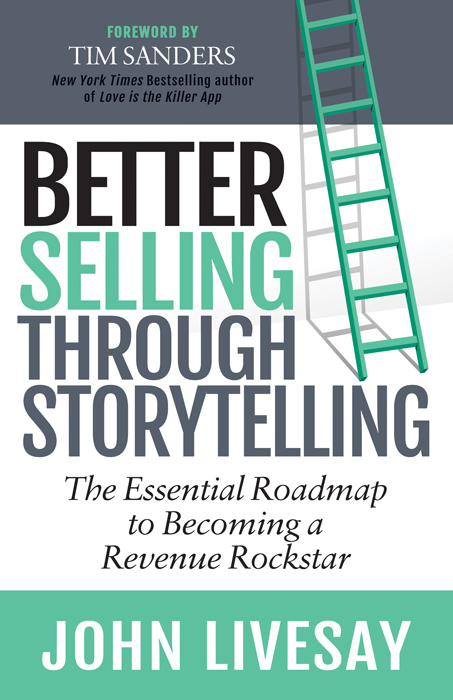
The next few steps were getting footage of myself in front of hundreds of people, and then getting myself on TV as an expert on how to ask for what you want. Then I could put together a video reel of me on TV being interviewed by Larry King, having a book, being in front of a big crowd, and getting testimonials from brands. All of that requires focus, time and money to get to the place where I am at in my career now.
Recently, I was going for a speaking job with Redfin, a real estate technology company. I was up against two other speakers, and before my interview, I took the initiative to call up Redfin and pretend that I was selling my place. I did this to see how I was treated by the company staff. Then I called the competitor to compare how I was being treated between Redfin and their competitors. When Redfin interviewed me, I mentioned to them that I had done that. They were excited to hear what I had found out as no other speaker had ever done that. I connected the dots for them. I told them, if I’ve done this much preparation for the interview, imagine how much I’ll do if you hire me as a speaker. They ended up hiring me as a speaker. I was told that they had liked my energy and my preparation made me the best speaker that they had ever had. People need to understand that this is exactly what sales is; people buying from people they trust.
How did it come about that you were interviewed by Larry King?
When I first decided I wanted to get on television, I was talking to a TV producer. He told me that to get on television you have to be young or famous and, unfortunately, I was neither. However, I knew that other people have gotten on TV before, so I told him to just get me in the room and I’ll sell myself.
I realize that you don’t just get to be on Larry King, so let’s start at the beginning. I did media training. I had a great publicist that took my book on selling and played up the storytelling angle. With this, I made several televised appearances doing segments on topics like storytelling or confidence, but being introduced to a man named Cal Fussman is what got me on the path to Larry King.
Cal was a journalist for Esquire magazine who was reinventing himself at the time, going from a journalist to a keynote speaker. He had invited me to be on his podcast. He interviewed me, asking good questions about storytelling and selling himself, and he liked my answers a lot. He also happened to be a co-host on a show called Breakfast with Larry King, and he offered me a spot on the show to talk about my book. That’s how I got to be interviewed by Larry King.
Once again, I did my research before the interview. I personalized storytelling through doing my research on Larry King’s big break because he wasn’t always famous. People tend to forget that.
How do companies stay competitive in this new world of sales? What do they have to do to stay above the trends?
Staying competitive means going above and beyond. Giving people something before they even know they need it. For example, my client Banana Republic wanted a way to elevate their brand. Another creative solution came to mind, and I said what if we allowed, at least at the flagship stores at Union Square or Rockefeller Center, a place for people to charge their phones when they shopped. Sales went up from there because people kept shopping waiting for their phone to completely charge. Keeping a brand at the top of the game is all about surprises.
How do you work with the executive clients, like CEOs, as they’re already at the top, and they can be set in their ways? How do you help them see things differently?
As a CEO you’re asking your team to try new things, and not stay stuck in the comfort zone. You have to model that for them, that’s how you inspire them.
As for getting them to the next stage, I use the Blockbuster versus Netflix example. You just can’t be set in your same old mindset nowadays; you have to innovate.
What advice do you have for CEOs?
My advice for CEOs is to make sure that your team not just understands what the culture is, but lives and feels it. That’s how you’re going to stay competitive.
Comment on the importance of dressing sharp in business.
Your appearance is your first impression. As keynote speakers, suits are important. You need to feel confident. One of the best ways to feel confident is to have a suit that has great fabric and a great fit.
When it comes to sales, I used to go as far as buying everything, from my shoes to my suit to my belt, from the stores in the shopping center that I was recruiting to advertise in W Magazine. This is just one more example of how preparing for a job can make or break you.
After reading this article what is something you want the readers to reflect on?
Figure out what makes you unique. You have to stop dismissing your genius saying that everyone can do that. They can’t. Figure out what’s unique to your story. Who do you want to help? What problem do you want to solve? I speak mostly to sales audiences on how to win more business using storytelling. That’s my niche, and riches are in the niches.
A good story has to be three things; clear, concise, and compelling. Most people think I’m going to tell you a story and it’s going to go on and on for 10 minutes. That’s not clear or concise, and it’s certainly not compelling. Why are you listening to it? I ask them, does your story do all of those things?
What is the key to crafting your story and going from invisible to irresistible? How do you create this confidence in yourself?
Going from invisible to irresistible is a ladder. The rungs of the ladder are steps that go from invisible up to irresistible. I help people figure out where they are on that ladder with different clients. For example, some clients are very interested, but they still haven’t pulled the trigger. Then you have your favorite clients that love you and think you’re irresistible, but are you getting as much business from them as possible?
Do you think that sales are still a good profession to choose these days? What kind of advice do you have for young professionals who are wondering if they should pursue such a career?
The one thing that I can tell you, is that artificial intelligence is never going to be able to understand intuition and storytelling the way people do. There’s always going to be a need for a human connection.
Storytelling has been around since the days of Plato and I think that if you learn storytelling as a skill, whether you apply it for selling or not, you will benefit from it.
What is something you learned about life from your profession?
I’ve learned that we’re all the same. I’m fortunate to have the privilege of meeting people in all kinds of industries. The one thing that comes through as consistent across all of the industries I connect with, from Coca Cola to Redfin, is that people resonate with stories. When you tell a good story, you pull people in and emotionally connect with them.
What is the legacy you want to create for yourself?
If I leave a legacy that I’ve helped people get off the self-esteem roller coaster and realize that who they are is bigger than what they do. My whole mindset is always kind. Be kind in the way you talk to yourself, to the people you work with, and then be kind to the people that you’re selling to. That would be a great legacy.
Interview with special thanks to Contributor, Genevieve Cheng
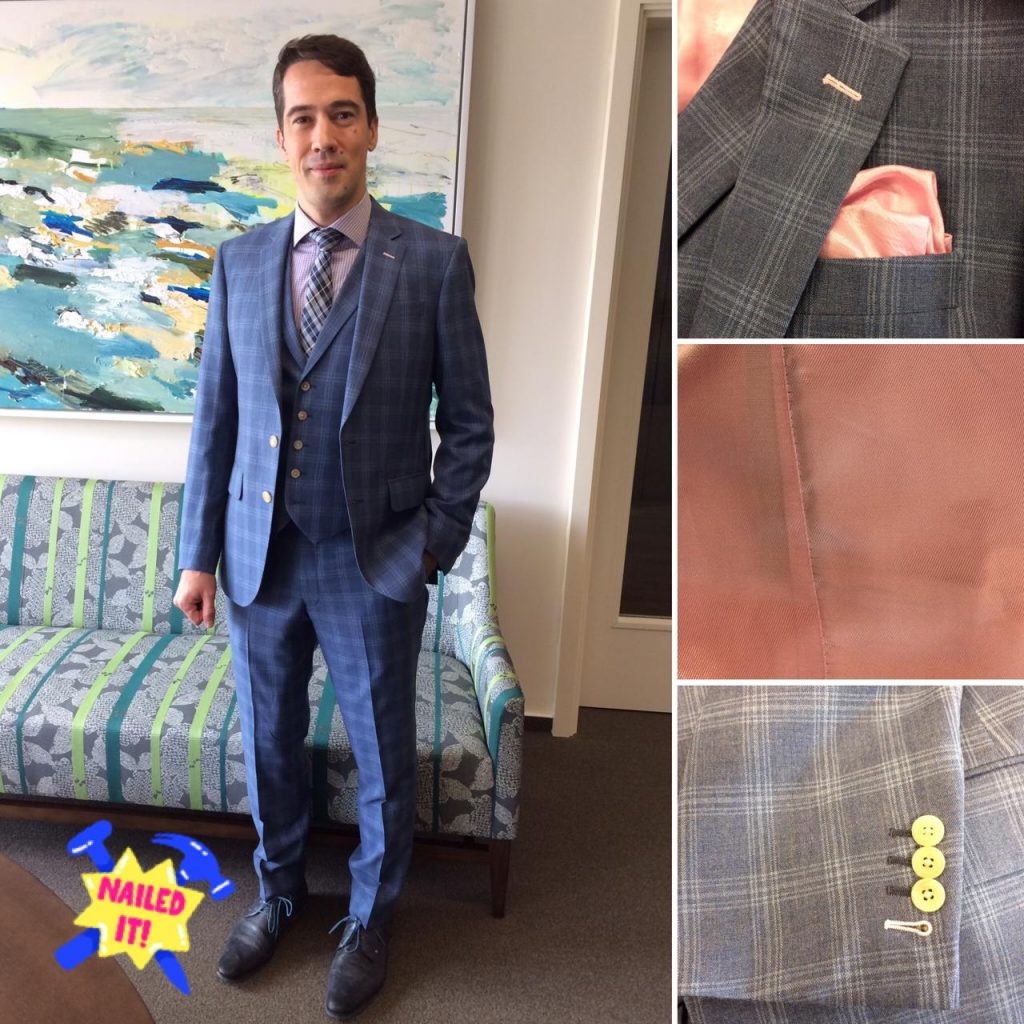
The ‘Suit of the Week’ honors goes to Michael Derwael, Global Independent Risk Management Officer at MFS Investment Management.
He is looking superb in his three-piece LGFG FASHION HOUSE suit.
The suit features blue checks coupled with pink lining and matching pink details. Notice the beautiful lapel on the waistcoat to top it off. The result is a perfect combination of style and flair that Micheal makes look effortless.
Michael’s Executive Clothier is Joris Croenen.
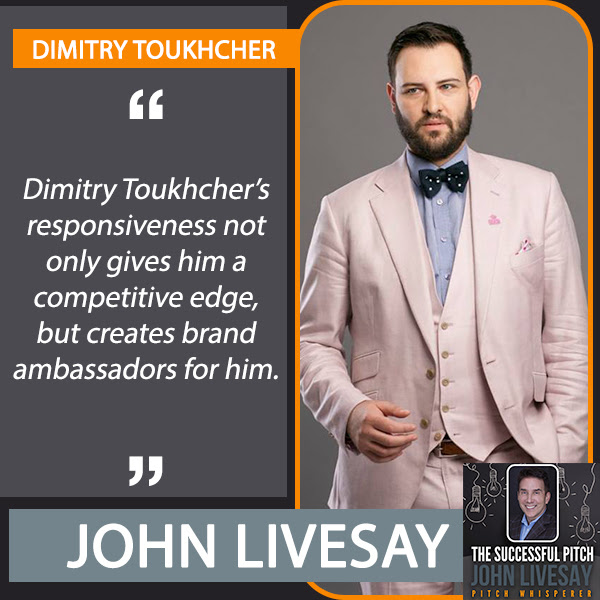
This an interview you can’t miss as Dimitry reveals his secret weapon to success in this competitive world.
Find out what that secret weapon is by listening to the Successful Pitch Podcast with John Livesay.
John is a top-rated keynote speaker on sales, marketing, negotiation, and persuasion. His TEDx talk “Be The Lifeguard of Your Own Life” has over 1,000,000 views.

The ‘Suit of the Week’ honors belongs to Austin Paladeau from McLeod Law LLP in hashtag#Calgary. Austin is looking suave in his new LGFG FASHION HOUSE suit in a sleek charcoal tone. Charcoal is an ideal color choice because it can be worn at any level of business or social occasion that is not ‘black-tie’ and it is extremely easy to match. Austin’s Executive Clothier is Aron Klassen. hashtag#Suithashtag#LGFGhashtag#stylehashtag#gentlemenhashtag#lawyerhashtag#Calgaryhashtag#Albertahashtag#fashionhashtag#corporatehashtag#law
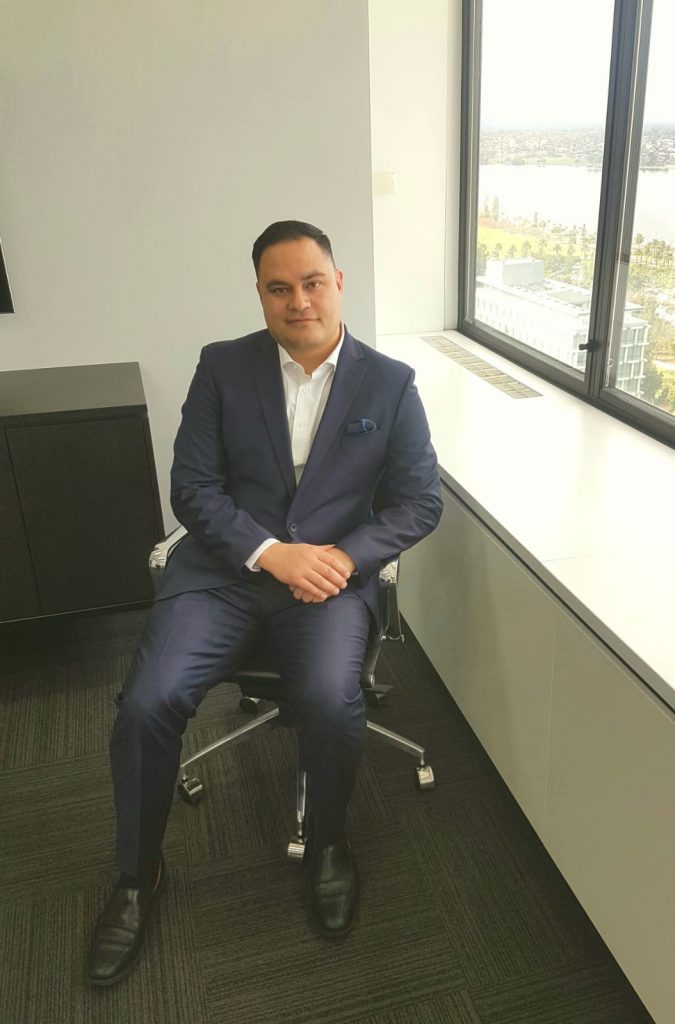
The ‘Suit of the Week’ belongs to Lorenzo Margraf, Account Executive at Iress.
He is sporting his LGFG FASHION HOUSE bespoke suit in a beautiful navy blue color made from our finest merino wool.
His LGFG Executive Clothier is Lucas Da Paz
Lorenzo understands that ‘dressing for a success’ is a must.
Ari Zoldan, CEO at Quantum Media wrote a piece for Inc. Magazine called, ‘Why ‘Dress for Success’ Still Matters (Perhaps More Than Ever).
https://www.inc.com/ari-zoldan/why-dress-for-success-still-matters-perhaps-more-than-ever.html
Ari writes, “First impressions are unavoidable. You can spend a long time trying to convince others of your qualities, but you’ll have a difficult time being perceived as genuine if your appearance doesn’t sync with the values you’re trying to express. The image you choose to portray to others is a big reflection of your true self, but the opposite effect can also be achieved. Research psychologist Jeffrey L. Magee surveyed over 500 firms to assess the impact of dress in the workplace. His studies led to the conclusion that continually relaxed dress ultimately leads to relaxed manners, relaxed morals, & relaxed productivity.
Bottom Line:
What you wear impacts you, affects others and can influence an entire company’s reputation. With the proper goal in mind, of aiming towards optimal productivity, a good dress sense can enhance the work ethic, & consequently achieve maximum results.”

What is the Nordic Business Forum? Only one of the biggest annual business conferences in the world running for over 10 years now. The main event gathers together over 7500 attendees from over 40 countries worldwide.
It is a business conference on steroids, with the world’s foremost thought leaders taking to the stage to deliver inspiring and riveting speeches. Such influential giants of business have headlined at the annual forum, including, Seth Godin, Amy Cuddy, Simon Sinek, Arianna Huffington, Sir Richard Branson, US President, Barack Obama just to name a few. Upcoming in the Fall of 2019 is this years’ main event where Steve Wozniak and George Clooney will be speaking along with a full line up of business heavyweights.
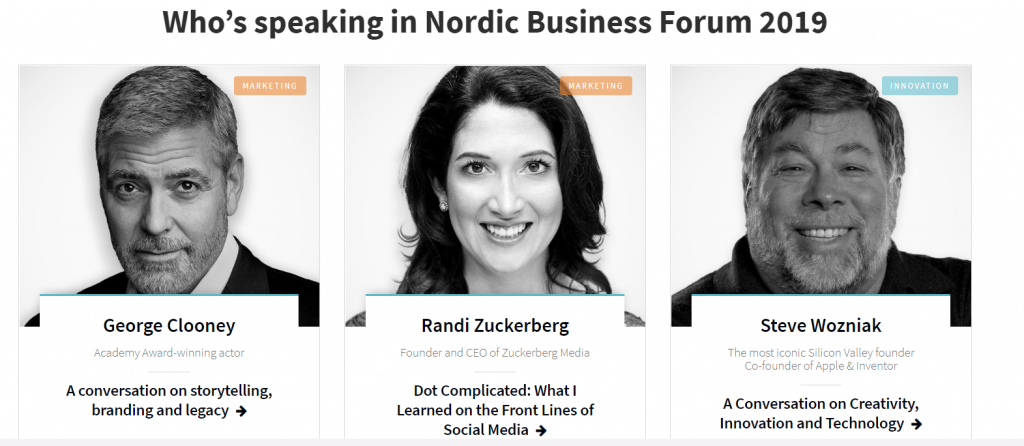
In this interview, CEO of Nordic Business Forum, Aslak de Silva sat down with Clarence Paller, Director of Public Relations and Corporate Partnerships for LGFG Fashion House. Aslak is a Sales and Marketing Executive who in March 2018, took over as CEO of Nordic Business Forum.
Aslak has an inspiring story, he once was a high-level fighter, a champion even, similar to MMA style, full contact, fighting standing up and on the ground and trying to finish with a submission or knockout. Aslak feels martial arts is in many ways applicable to business. He explains, “My business life is like in martial arts, where half of the time is spent concentrating on techniques that you use. The other half of the time you train your body to be able to implement those techniques that you want to do. The body is under your control; the more you study your body, the better its condition is the more adeptly you can use it. This is applicable to business; you need to work with your brain and keep your condition up. Your nutrition needs to be there so you won’t get tired and you can concentrate. Then you will be able to absorb and apply all the information needed. You need to be able to study all the time, by reading books, listening to smart people and learn from everywhere, 24/7. I think that this is a martial arts way. Meaning, you focus on things that you are passionate about, but you focus twenty-four-seven, not just when you train in the gym for an hour or two.
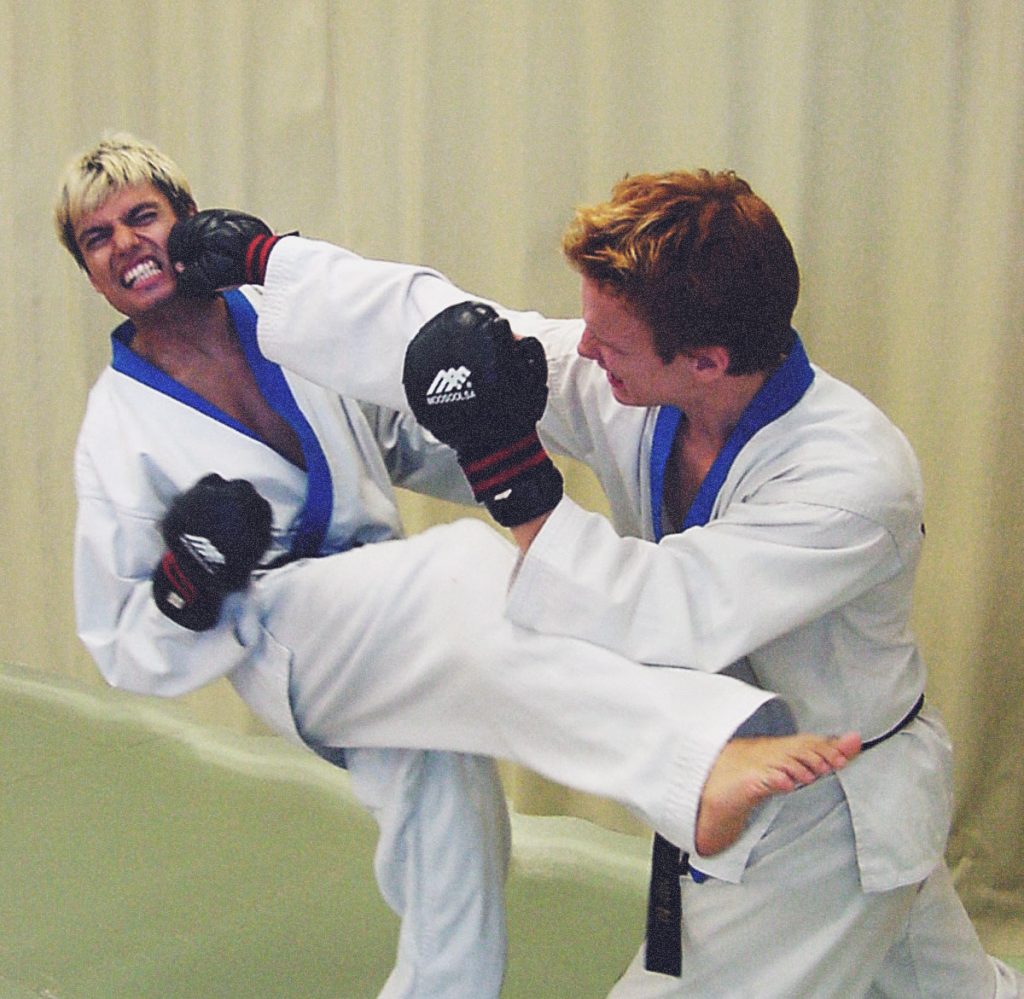
First, please tell us a little bit about yourself so that our readers get to know you better.
I recently turned 40, I am half-Finnish, half-Sri Lankan, born in Finland. I have lived in five different countries. I used to be a professional martial artist I had a big number of fights under my belt, I have even fought internationally but I injured my knee when I was 22. After that, it was hard to get to the top, although I came back. I was the world champion in the year 2000 in under 60kg weight class, and then I managed to fight a little bit longer, but then in 2002 I re-injured my knee, and it took too long for me to recover from that to become a UFC style MMA fighter.
I went on to teach martial arts at about 20 clubs in the Nordics. And then I injured myself in a way, that the doctor said that if I broke my hand for the third time then I would not be able to write with it anymore.

So, then I turned to the business side, working with several companies as a Marketing Executive. I am very goal oriented and wanted to pick up a role that I felt comfortable with and one that I could envision where I wanted to go. This is precisely the kind of role that I am in now as the CEO of the Nordic Business Forum.
How did you get on board with the Forum and what was your goal when joining?
I was a client of Nordic Business Forum for about five years in different capacities. Sometimes, I would get tickets to just attend and be a part of it. For me, it was one of the many conferences that I attended, for the purpose of obtaining business learning. I thought that if I attend these conferences once or twice a year, that I would keep in pace with the modernity and business trends of the future. The Forum also served the purpose of providing me with the speakers who I needed to follow to learn from and deepen my understanding of business and leadership.

The Forum started to look for a CEO, about a year before I came on board. I was contacted by a head-hunter about the role because I knew the co-founders and I was already helping them before in opening new markets and meeting people. At first, I said I couldn’t join them because I was working for another company that I was super into as well. However, I kind of realized that I am already a customer willing to pay from out of my own pocket for the Nordic Business Forum and that I really love working with people who have the passion and drive for the future, and want to make it big. Then I thought that actually, this was the place and team for me. I knew myself and believed that I could actually succeed in the role. I was already using the knowledge that the Forum provided and thought what better place to apply the knowledge than to the Forum itself. In the Nordic markets, everything is sales and business-oriented and that is my cup of tea. So, I accepted the role and knew it was an opportunity to enhance myself as well.
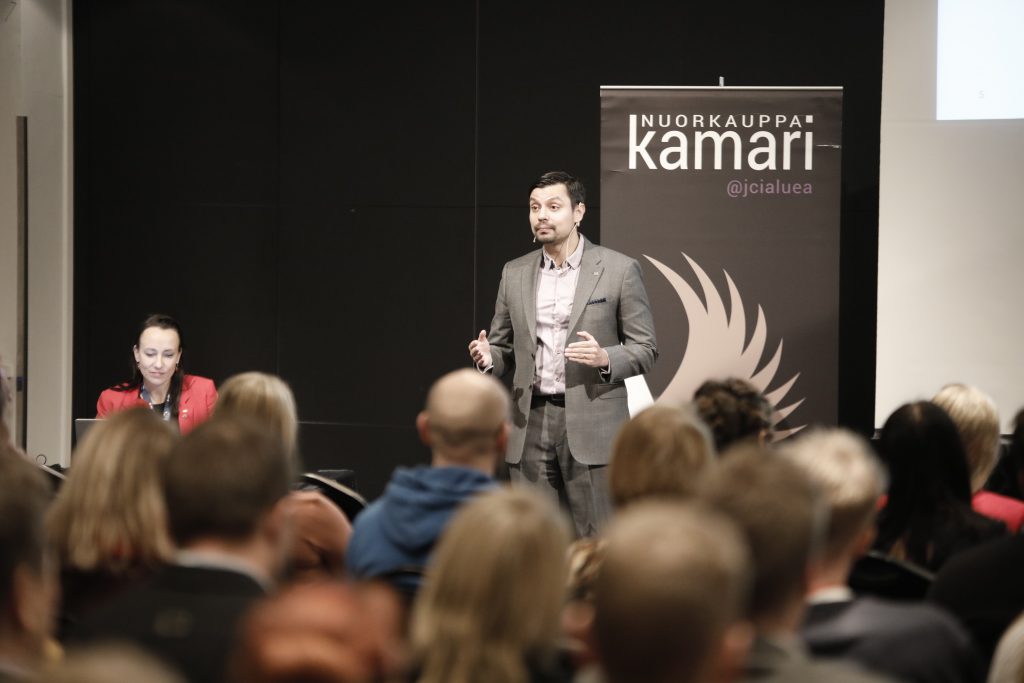
Tell us about the Nordic Business Forum is and what makes it the world’s most significant business conferences?
We believe that inspiring and equipping business leaders who want to make the world a better place is the single most effective way in which we can make an effect on the whole society at large. Our mission is: “building leaders who change the world”.
Back in 2011, Nordic Business Forum set a 10-year goal of developing the annual main event into the most noteworthy business seminar in the world. Step by step we are pursuing to reach that goal by 2021. At the moment we organize business conferences in Finland, Sweden, and Norway. We provide world-class business content and networking for over 10,000 C-level executives yearly, being one of the biggest business event organizers in Europe.
We pride ourselves in kind of providing the best possible customer experience where you are taken care of from the moment you arrive at the events end. This ensures guests can actually concentrate on the theme of the event and the networking opportunities there.
For the past two years in a row, we had 7500 attendees, the maximum capacity that we could have. Of course, we still want to go bigger. We had about 20 thousand live stream viewers for the previous event; so, we are talking about 30 thousand people watching the content that we provide.
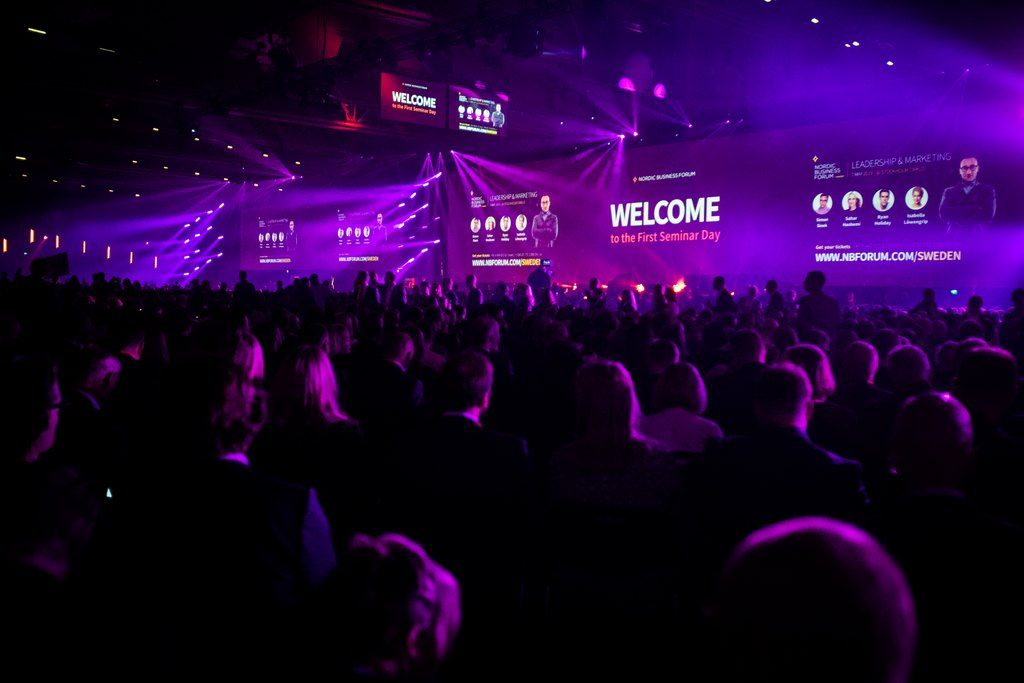
Who are the most influential speakers that the Forum has had to date?
I would say the most influential speaker we had was US President Barack Obama. That said, we have had a plethora of the world’s foremost thought leaders to speak at our event, including, Gary Vaynerchuk, Jack Welch, Sir Richard Branson and now George Clooney is coming in the Fall of 2019. Just to name a few. We are always going for the most top-level speakers in the world.
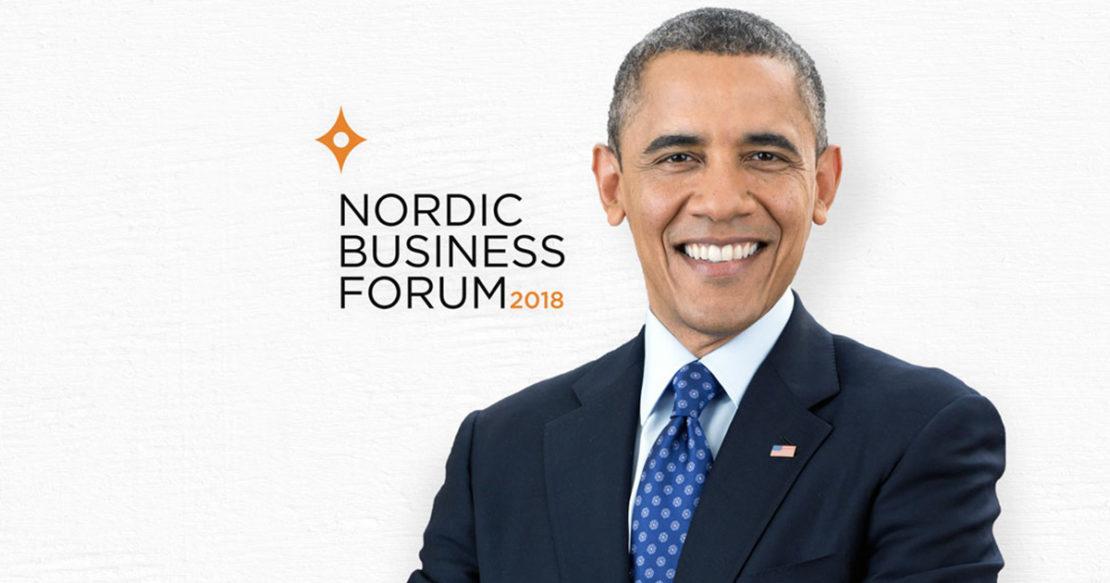
Which of these speeches had a profound impact on you? What is it like seeing these people in real life?
When you see President Obama, live, it really impacts and inspires you. There are truly so many amazing speeches, but one that really stuck with me was Arnold Schwarzenegger’s where he was explaining how he built everything up from youth to get to where he is today. He explained how he went into bodybuilding and the attitude he had in his early days. How he dealt with the doubters, stayed focused, consistent and persevered. He explained how his mindset transcended the gym and applied to real life. From there his speech covered when he went to the US and how he was not being picked up for the movies, so he had to re-focus work hard even harder for his shot. This leaves you in awe and you realize that these are real stories on what it takes to become big and make it in this world. You understand that you shouldn’t complain, and rather direct that energy to your goals and stay focused, consistent and resolute.
Another speech that really stuck with me was Simon Sinek’s where he spoke of starting with why and finding purpose. This is so important for a leader, and especially in a CEO’s position. I think it is very impactful when you actually hear what is the difference between telling people what to do but rather as a team finding the purpose together. This is a game changer in leadership and building successful work cultures and organizations.
Another greatly impactful speech I heard was the one by Jim Collins, the author of Good to Great, Why Some Companies Make the Leap…And Others Don’t. From his speech, you understand the difference between how you build a good organization and how you build a great organization with results. His speech touched on, that if you make it to the top, then being able to identify what things to look for and spot what things to watch out for and not do. You understand that there are actually a lot of things that you could do wrong, even though you have made it to the top. It is these kinds of speeches that really make you have that ‘aha’ moment.
I also want to say that Gary Vaynerchuk speech has stuck with me, he said that you need to develop yourself all the times, and what you think is relevant today may not be relevant tomorrow. I totally agree I think you should always be prepared for what is coming tomorrow.
From the speeches and speakers have you identified patterns of success or key themes of success?
The pattern is a kind of positive optimism that you will make it, but also diligence and being able to do the hard work. It begins with setting a goal. Working hard is not enough as this can be interpreted as anything. The key is to be diligent enough and stick to the plan. Then, if something happens, you need to come up with something new and work even harder. Working hard means doing things efficiently, well thought out and consistent. Part of working smarter. As I mentioned, working hard can be interpreted in a million ways, it is the results that count. Results are formed through habit, consistent, diligent, well thought out approach and not cutting corners. A lot of people go into business conferences or read literature looking for a quick fix, but there is no easy solution that gives you sustainable results. You might see a quick peak and a quick drop at best. Therefore, you need a more comprehensive experience, which gives leaves you inspired and motivated to the challenge.
A lot of successful people state that they take challenges as opportunities and try to find ways out again. I also think this is something from martial arts, we call it a peaceful heart; when a situation puts big pressure on you and you need to stay calm, to be able to see what to do next. Successful people also live in a situation and they are not threatened by it. Successful people do not dwell in the past or project their attention to the future, rather they direct their energy, time and resources in the present moment.
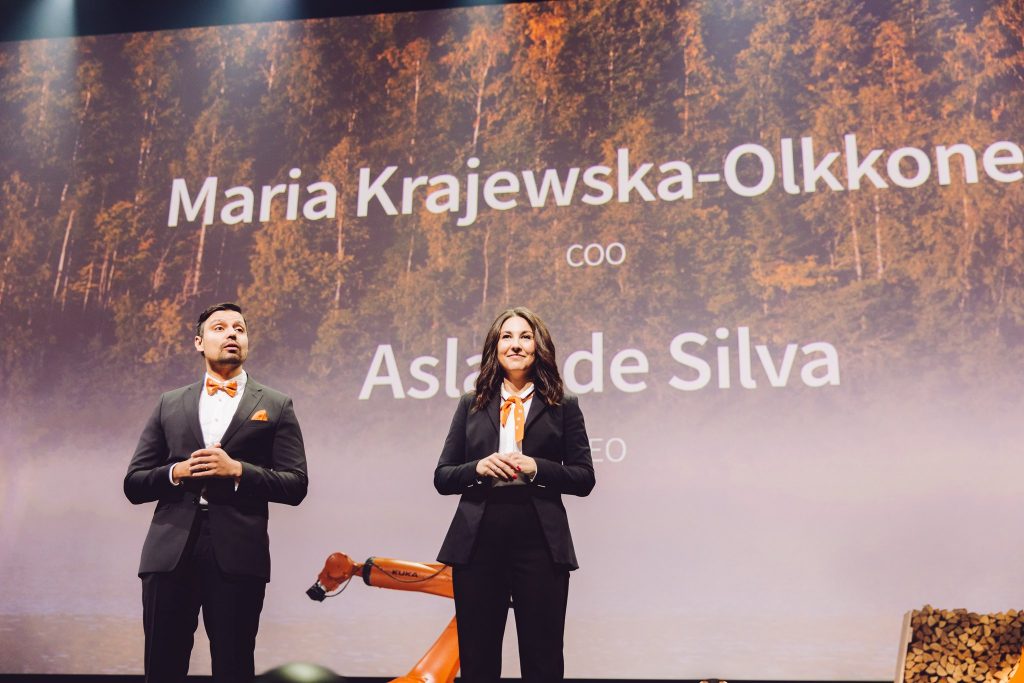
What drives you: a quest for monetary rewards, desire to help people succeed, or both?
Money comes when you succeed. It is not a sole driver for me, but money is important in life, and I have a family and money is a means to support them well enough. What motivates me, especially in this job is that I am aligned with the mission that we have as a company – to build leadership that would change the world.

I think this stems from my upbringing. My mother used to be a university teacher, a lecturer, and I used to teach martial arts myself. I enjoy helping people to become better in the field that they want. This is it’s something that I am super passionate about. I am always very happy when the team I am a part of succeeds. This is the biggest motivator, to see individuals and teams grow in many ways and make it big, as a team and a company. This fuels me every day.
How do you deal with adversity and what were some of the biggest challenges you faced in your tenure so far?
Adversity is something that happens in life, and I always look for it. Sometimes I am paranoid when everything is going well, so it worries me that perhaps there is something that I did not foresee and could arise. I choose to be prepared for different scenarios and possible situations that can arise and know if they do arise how to cope with them. I always tend to look at the big picture. Again, I think it comes from my martial arts background. When a fight starts, you are more worried and tense if you don’t feel contact. When things start happening and you are in contact with your opponent, that is when you are in the zone and know how to react. That is how I work with adversity as well.
When I started here, the company was going through an intense period of change, a lot of which was unprecedented. The biggest change of all was that one of the founders stepped down as CEO to be the Chairman of the Board instead. This left the company operations in a bit of disarray. What’s more, the founders’ leadership style was to have the final say on all the decisions. When I came in, I didn’t have all their knowledge and history at my disposal to make smart decisions quickly. I also had to make the role my own. After all, I was hired because they saw potential in me to grow their company in size and strategic leadership. I had to get to work and build up that kind of confidence from the team I was working with and for them to trust that I was working for them, and this required making them work in a way that they were not used to. This meant changing the working culture to a more empowering environment so that people start making their own decisions and are not afraid of mistakes. Changing work culture was adversity in starting this role and that was not easy to go through, but now we are there and things are looking great.
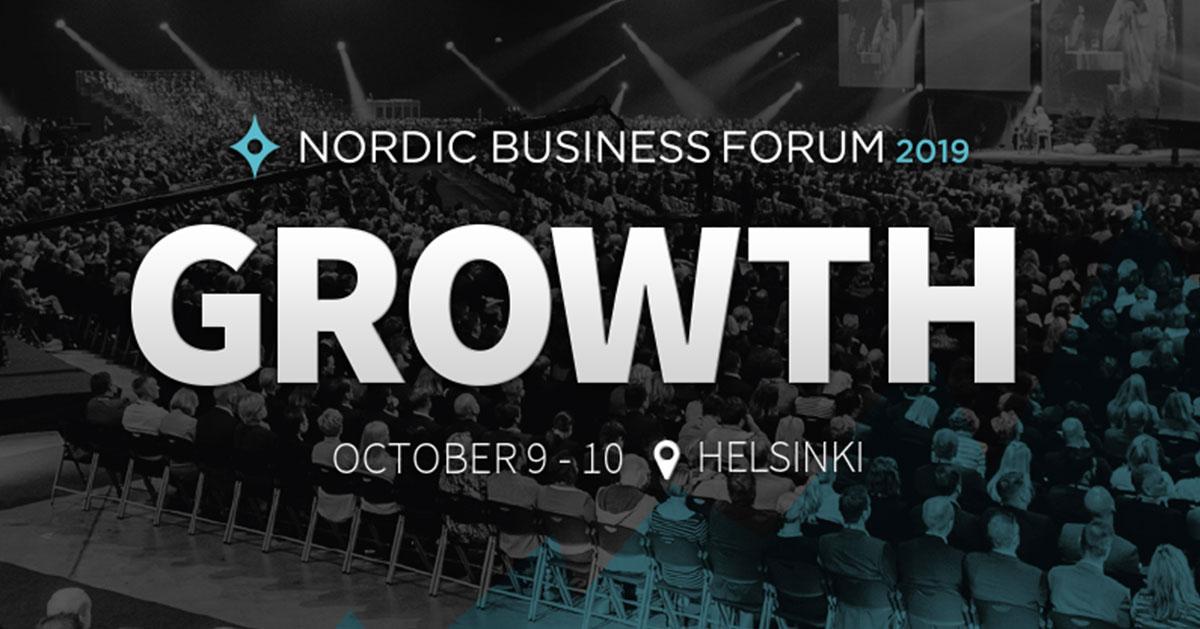
There is a saying that company culture eats strategy for breakfast. Can you comment on it?
This is a great saying. For many people in organizations, there is a culture of being afraid to make decisions because of worrying about what would happen if they made a mistake. This is a fear-based organization where people worry and are scared and hence, they are reserved and don’t often step up with ideas or decisions. People fear that if they make a mistake then they will be blamed in front of everybody else, then what happens is that nobody wants to make a decision that they are uncertain of. So, they are afraid of taking risks. I think Amazon had – a constitutional ‘yes’; if nobody said no, then the decision is always yes. When I stepped in as the CEO of the Nordic Business Forum, this was one of my first orders of business. To bring about a change in attitude and create a nurturing environment where people were braver to experiment and take risks than they were in the past. This is a fundamental shift in an organization and a huge undertaking to do. Even if you tell the people you can do this, initially, they may not and it takes time and building up for them to get to a point where they feel comfortable. You can’t change culture immediately.
Can you name a person who has had a tremendous impact on you as a leader? Maybe someone who has been a mentor to you? Why and how did this person impact your life?
I don’t know about mentors that I would look for, but I am always reading books and listening to speeches. Seth Godin, for instance; I can’t say he is my mentor, but his lessons have guided me through some of the most defining moments in my career. He really says very smart things that allow you to change your thinking and see a bigger picture. In that way, he always challenges me to see different things. I love that kind of thinking, that you always need to be looking at the types of things that other people don’t see. That is what being a CEO is all about, by assembling teams and creating a culture and always looking for things that nobody else sees and then you can take care of and help the whole team.
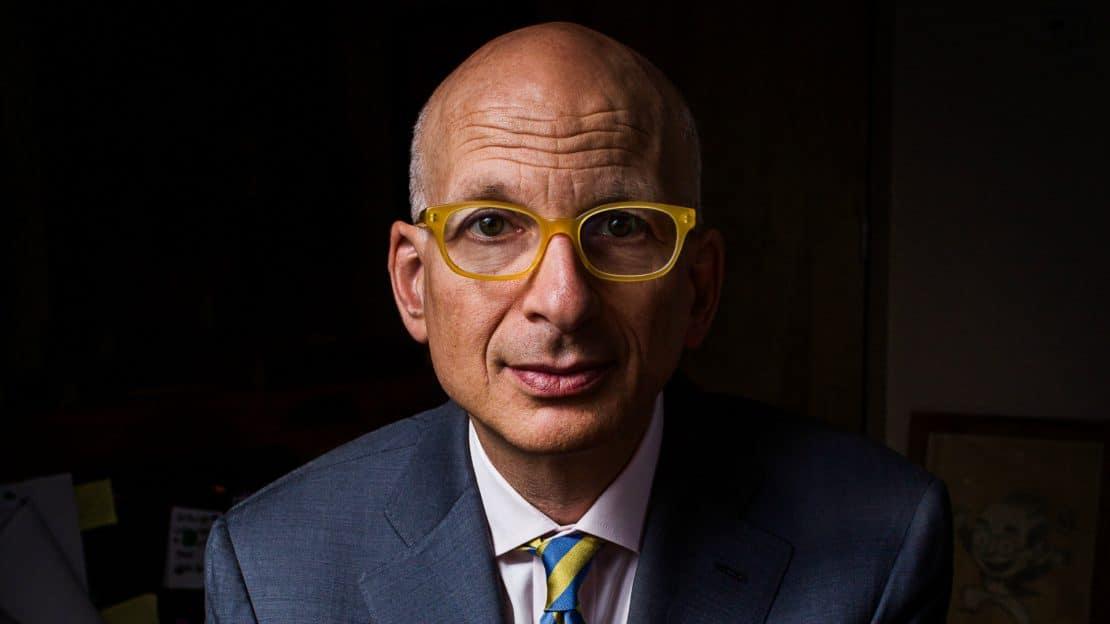
What are the most important decisions you make as a leader of your organization?
Setting up the rules of the game of how we work. Of course, there are decisions that are money related, or who will be the speaker, where we are going to go, and setting up a vision. However, I think it’s more like, ok, what’s acceptable and what’s not, and then making that the standard. This way the whole organization knows where we are going. Other important decisions include picking up people and putting them in roles where they can succeed and as a team, we all make it big. A CEO can’t do everything and can’t be involved with everything; hence, the CEO needs to make sure the right people are in place who can make their own decisions and contribute. These people are smarter than the CEO in their own ways, and as a unit, everything comes together. The key for a CEO is to find these people and let them grow and take responsibilities. You need to be able to let things go from your table and have the faith and trust in people that they do the job at a high level.
What have you learned in the last year that will inform this company in the next year?
The way we work is that we have three cities, Helsinki, Oslo, and Stockholm, each city has one event a year. The whole year we work for one single day or two-day events. For each event, we need to deliver the utmost best customer experience. There is high pressure on sales and execution. As a team, we just need to trust that we are doing the right things. We need to deliver the best product we can to be at the top of the game, but at the same time we need to be smart enough to see that if we are a bit behind on sales, then we need to set a different plan on how to catch up the gap and not only meet targets but shatter them.
What are you doing to ensure you continue to grow and develop as a leader?
I take half an hour every morning to develop myself on a certain theme. Now I am working understanding the strategic part of the business and how to build different scenarios. I learn from the stories of how other companies were being built and how they overcame struggles when they encountered them to get to where they are today.
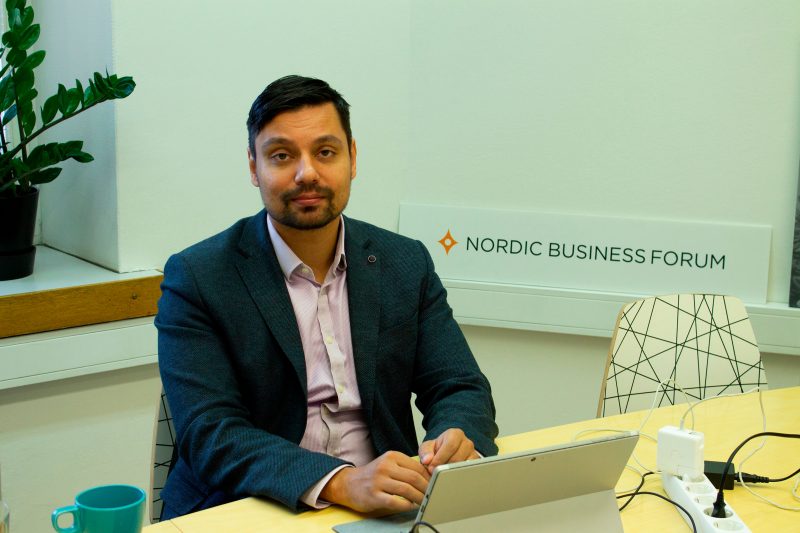
At other times, I may be working on marketing, sales, leadership skills, etc. I spend half an hour each day on that. In general, I am into many different things. I try to follow the media to see what is happening and to build general knowledge. On top of all that, I am always attending different business conferences, listening to podcasts, and so on. I always have a desire to be learning.
Apart from daily activities, I tend to have a few times a year, where I spend full days in conferences, training and reading books. These are like training camps, where the focus is to take a bigger step and challenge your old way of thinking by learning something bigger. This is also a good time to reflect on the past and make changes that are too big to make during busy working hours.
Learning can come from kids even. They live life in a different way than I do and you can take from them a new perspective or outlook on doing something. You need to be open to learn from everybody and see the world in all kinds of different ways. All the meantime, being focused on yourself and understanding that I need to develop one aspect and then continue. Learning has to be directed and focused effort. Being all over the place is not effective.
Nordic Business Forum set a 10-year goal of developing the annual main event into the most noteworthy business seminar in the world. Describe how the goal is becoming a reality and what else needs to happen to achieve it?
It is hard to measure, but what we want to see is continued growth on attendance. There are bigger business conferences in the world than us at this stage. Our goal is to become the biggest for business owners and C-level executives. For the Fall 2019 main event, we will have seven and a half thousand tickets sold, but we have three events and the other two have to grow to the same caliber as well.
Another metric of success is becoming more international. We had 47 different nationalities last year at the main event. We want to increase that. In order to be the most noteworthy forum in the world, we need to be the most international. People need to travel to see us or tune in through the live stream.
International media coverage and social media including tweets, posts, comments all are major components to the growth of the Nordic Business Forum. The more attention we have from the world’s press as well as activity on social media is vital in growing the Nordic Business Forum and growing our company as a whole.
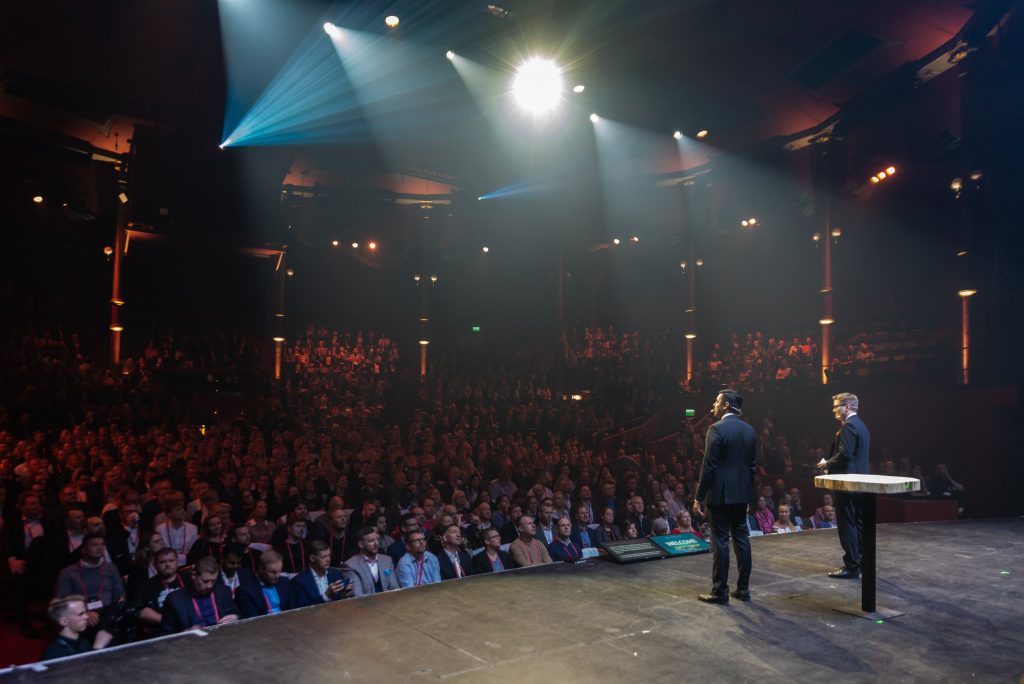
Who would be the top people you would like to see at future Nordic Business Forums?
For sure it would be people like, Jack Ma, Elon Musk, or Jeff Bezos. These are the kind of caliber people that we want to see come to the Nordic and speak. Of course, there are other business gurus that we would like to see.
Is there any room for collaboration with other forms and people doing a similar thing for the future?
We are pretty open actually sharing information and collaborating. We know event production and being cutting edge to make the best possible experience. For example, we have figured out how to make catering for 7,500 people simple and fast, while also reducing food waste. We have mapped out the most efficient check-in routes to minimize our customers’ waiting time upon arrival. We have even planned out the logistics of our toilet lines so that people do not need to cross their legs for too long! We are incredibly good at those logistical things. Whereas, another company may have an affinity for something that could be beneficial for us. It is about working together to create the best possible experience.
What advice do you have for other CEOs?
Being able to work with millennials is big for any CEO. In my previous company, it was very nice because I got to work a lot with them. Before working with millennials, I got used to everyone waiting on my direction and expecting I would guide them through everything. Whereas, with the millennials it was different. I recall making a marketing plan with them. What we did is we opened up a Google Docs sheet and then made a table of contents there, and people started working on that immediately. I was blown away at what was happening. They kind of divided themselves by the skillsets of each team member and they would all start working on their part. During that process, when they didn’t know where to go, they asked for my help or they asked for my opinion. However, a lot of stuff they could do on their own and they never needed my attention there.
Observing this, I understood how these different people think and what kinds of capabilities they have. I saw the value that they could bring and gave them the chance to trust themselves. Being supportive of them and letting them shine, while also pushing them. I noticed some were still not exactly trusting of themselves and the self-confidence part was not there. I was helping them to build self-trust and self-confidence. I would suggest books, podcasts or people for them to follow that would help if they were struggling with something,
I took these lessons to heart when I joined the Nordic Business Forum. We work with a guideline called SEE THE DEAL, which come from words: Smooth, Energizing, Experience, Take ownership, Have fun, Embrace curiosity, Do it with heart, Exceed expectations, Always give your very best, Let others shine. This a very powerful way to work as a team and ensure that everyone brings in value, but also gets recognized for the efforts. It feels good to be part of a team with such a great approach.
In one year, they were so good at marketing that they doubled the revenue of the company. It was because of the millennials. It was their first job ever, and nobody has trusted them before, but when you give them that kind of trust and let them kind of build themselves up, step by step to be a professional, that is what works. That is what I am always trying to do. I am always trying to trust that people are better than you think, and you just need to find that talent in them and work with that.
The result is that they are super motivated and committed to you, they trust you and will do great things for you. With companies who don’t treat millennials this way is what happens many times where the young worker gets frustrated and they go off and do their own thing. Many start-ups began this way.
Having more experience than a millennial doesn’t mean that you know everything better. Rather, it means that you have experience of something that can help them. As a CEO you are just there to help them to succeed. When you understand that everything gets better and your company can grow leaps and bounds.